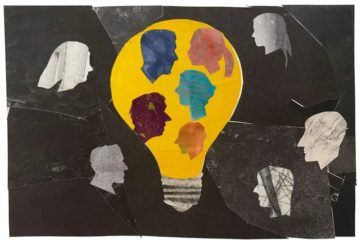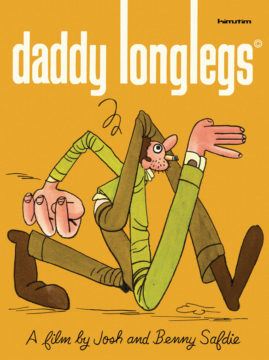Eve Peyser in Intelligencer:
 In the designated game room at the Nugget Casino Resort in Sparks, Nevada, which was open 24 hours a day during this year’s Mensa Annual Gathering, I sat at a table with a woman named Kimberly Bakke, a 30-year-old purple-haired pastry chef and teacher from Las Vegas. Bakke is basically Mensa royalty. A 1996 Orange County Register article about her admission to the high-IQ club revealed that she was conceived at a Mensa convention, and she hasn’t missed one since; she became a member when she was three. “I have a big brain,” she told the Register reporter, who noted that her IQ was 143, about 50 points higher than the average among people of all ages. Bakke was hanging out with Christopher Whalen, a 35-year-old defense contractor from Omaha, Nebraska, who was admitted to the club in 2016. They met in a Mensa Gen-Y Facebook group shortly after, and became fast friends, texting each other every day. The 2022 Annual Gathering (AG, as Mensans call it) was Whalen’s first and marked the first time the pair met IRL.
In the designated game room at the Nugget Casino Resort in Sparks, Nevada, which was open 24 hours a day during this year’s Mensa Annual Gathering, I sat at a table with a woman named Kimberly Bakke, a 30-year-old purple-haired pastry chef and teacher from Las Vegas. Bakke is basically Mensa royalty. A 1996 Orange County Register article about her admission to the high-IQ club revealed that she was conceived at a Mensa convention, and she hasn’t missed one since; she became a member when she was three. “I have a big brain,” she told the Register reporter, who noted that her IQ was 143, about 50 points higher than the average among people of all ages. Bakke was hanging out with Christopher Whalen, a 35-year-old defense contractor from Omaha, Nebraska, who was admitted to the club in 2016. They met in a Mensa Gen-Y Facebook group shortly after, and became fast friends, texting each other every day. The 2022 Annual Gathering (AG, as Mensans call it) was Whalen’s first and marked the first time the pair met IRL.
More here.

 D
D Surrealism is having a moment. It is the theme of this year’s
Surrealism is having a moment. It is the theme of this year’s  “We have heard that when it arrived in Europe, zero was treated with suspicion. We don’t think of the absence of sound as a type of sound, so why should the absence of numbers be a number, argued its detractors. It took centuries for zero to gain acceptance. It is certainly not like other numbers. To work with it requires some tough intellectual contortions, as mathematician Ian Stewart explains.
“We have heard that when it arrived in Europe, zero was treated with suspicion. We don’t think of the absence of sound as a type of sound, so why should the absence of numbers be a number, argued its detractors. It took centuries for zero to gain acceptance. It is certainly not like other numbers. To work with it requires some tough intellectual contortions, as mathematician Ian Stewart explains. Donald Trump says Republican voters sent Liz Cheney to “political oblivion” with her crushing election defeat at the hands of a candidate he endorsed. But not so fast – here’s how one of the former president’s biggest critics could still hurt him if he runs for re-election.
Donald Trump says Republican voters sent Liz Cheney to “political oblivion” with her crushing election defeat at the hands of a candidate he endorsed. But not so fast – here’s how one of the former president’s biggest critics could still hurt him if he runs for re-election. More than once I’ve been told by successful writers that if I wanted to become a writer, I should copy out by hand my favorite novel. “You have to write out the entire thing,” one of them told me. “You can’t imagine how illuminating it can be.” I’ve never done this exercise myself, but I believe that I’ve experienced its intended effect doing literary translations. Translating a novel was a formative experience for me as a writer because I learned that writing is like any other art: while talent can’t be taught, technique can be learned. So, how exactly does one learn technique? I decided to take creative writing classes, earning my Certificate in Creative Writing from UCLA Extension and attending classes through Stanford Continuing Education’s program, as well as a handful of other writing centers. It was then that I experienced the creative writing workshop for myself.
More than once I’ve been told by successful writers that if I wanted to become a writer, I should copy out by hand my favorite novel. “You have to write out the entire thing,” one of them told me. “You can’t imagine how illuminating it can be.” I’ve never done this exercise myself, but I believe that I’ve experienced its intended effect doing literary translations. Translating a novel was a formative experience for me as a writer because I learned that writing is like any other art: while talent can’t be taught, technique can be learned. So, how exactly does one learn technique? I decided to take creative writing classes, earning my Certificate in Creative Writing from UCLA Extension and attending classes through Stanford Continuing Education’s program, as well as a handful of other writing centers. It was then that I experienced the creative writing workshop for myself. Even a small conflict in which two nations unleash nuclear weapons on each other could lead to worldwide famine, new research suggests. Soot from burning cities would encircle the planet and cool it by reflecting sunlight back into space. This in turn would cause global crop failures that — in a worst-case scenario — could put 5 billion people on the brink of death.
Even a small conflict in which two nations unleash nuclear weapons on each other could lead to worldwide famine, new research suggests. Soot from burning cities would encircle the planet and cool it by reflecting sunlight back into space. This in turn would cause global crop failures that — in a worst-case scenario — could put 5 billion people on the brink of death. As probably will surprise no one, the polarization spiral between the left and the right has only gotten more intense in the last three years. Most alarming is the growing acceptance of political violence as a justifiable method for achieving political goals. A survey in 2019 found that approximately one-fifth of partisans in both parties believed that
As probably will surprise no one, the polarization spiral between the left and the right has only gotten more intense in the last three years. Most alarming is the growing acceptance of political violence as a justifiable method for achieving political goals. A survey in 2019 found that approximately one-fifth of partisans in both parties believed that  Why do people keep falling for hoaxes?
Why do people keep falling for hoaxes? All living cells power themselves by coaxing energetic electrons from one side of a membrane to the other. Membrane-based mechanisms for accomplishing this are, in a sense, as universal a feature of life as the genetic code. But unlike the genetic code, these mechanisms are not the same everywhere: The two simplest categories of cells, bacteria and archaea, have membranes and protein complexes for producing energy that are chemically and structurally dissimilar. Those differences make it hard to guess how the very first cells met their energy needs.
All living cells power themselves by coaxing energetic electrons from one side of a membrane to the other. Membrane-based mechanisms for accomplishing this are, in a sense, as universal a feature of life as the genetic code. But unlike the genetic code, these mechanisms are not the same everywhere: The two simplest categories of cells, bacteria and archaea, have membranes and protein complexes for producing energy that are chemically and structurally dissimilar. Those differences make it hard to guess how the very first cells met their energy needs. 2022 has been a year of dollar power—power that manifests itself in both overt and subtler forms.
2022 has been a year of dollar power—power that manifests itself in both overt and subtler forms. In 1982, a fifty-four-year-old
In 1982, a fifty-four-year-old  I learned about Augustine of Hippo from my mother. She had memorized lines from his Confessions as a Catholic schoolgirl in the Caribbean village of Manatí in Colombia. “Our hearts are restless until they rest in God,” she would tell me. Even after she immigrated to the United States and became a born-again Protestant, she kept reciting him. When I left my home on Long Island to study philosophy at a liberal arts college out of state, her prayers followed me just as Monica’s trailed her son, Augustine, when he boarded a ship heading for Italy. I joked that she was my Monica. But I gradually developed my own relationship to Augustine. As I encountered him in a predominantly white academic setting, I latched on to him. He became more than the metaphysical or doctrinal positions parsed in class. Augustine was the symbol of a more diverse and global Christianity that had been covered up by white-supremacist lies. “The greatest thinkers of the early Church came from Africa!” I declared to amused peers. My Augustine was Black.
I learned about Augustine of Hippo from my mother. She had memorized lines from his Confessions as a Catholic schoolgirl in the Caribbean village of Manatí in Colombia. “Our hearts are restless until they rest in God,” she would tell me. Even after she immigrated to the United States and became a born-again Protestant, she kept reciting him. When I left my home on Long Island to study philosophy at a liberal arts college out of state, her prayers followed me just as Monica’s trailed her son, Augustine, when he boarded a ship heading for Italy. I joked that she was my Monica. But I gradually developed my own relationship to Augustine. As I encountered him in a predominantly white academic setting, I latched on to him. He became more than the metaphysical or doctrinal positions parsed in class. Augustine was the symbol of a more diverse and global Christianity that had been covered up by white-supremacist lies. “The greatest thinkers of the early Church came from Africa!” I declared to amused peers. My Augustine was Black. It was a geographical mystery that had befuddled explorers, astronomers, and philosophers for two millennia: Where did the Nile begin? In “River of the Gods: Genius, Courage, and Betrayal in the Search for the Source of the Nile,” historian Candice Millard recounts the adventures of two ambitious, Victorian-era rivals who spent years trekking through East Africa, enduring unimaginable hardships, in an effort to be the first to solve the puzzle.
It was a geographical mystery that had befuddled explorers, astronomers, and philosophers for two millennia: Where did the Nile begin? In “River of the Gods: Genius, Courage, and Betrayal in the Search for the Source of the Nile,” historian Candice Millard recounts the adventures of two ambitious, Victorian-era rivals who spent years trekking through East Africa, enduring unimaginable hardships, in an effort to be the first to solve the puzzle.